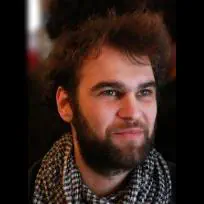2022-03-04 : INT Seminar - "Unifying Different Psychometric Methods : Theory and Experiment" (Jonathan Vacher)
A seminar by Jonathan Vacher at the Institute of Neurosciences Timone in Marseille (with the CONECT group).

During a seminar at the Institute of Neurosciences Timone in Marseille, Jonathan Vacher will present his recent work on “Unifying Different Psychometric Methods : Theory and Experiment”:
The two-alternative forced choice (2AFC) paradigm is one of the main methods used to measure perceptual thresholds and biases. Measurements from a 2AFC experiment can be modelled using signal detection theory (SDT) from which the psychometric function can be derived theoretically. Recent efforts to combine SDT with Bayesian probabilities has linked thresholds and biases to hypothesized prior knowledge and optimal encoding/decoding [1]. From another perspective, the maximum likelihood difference scaling (MLDS) paradigm is a more recent method that allows the experimenter to estimate a perceptual scale that links a physical property to a psychological dimension [2]. Such a perceptual scale is obtained from the comparison of relative differences between pairs of stimuli. Here again, the underlying model can be understood in terms of SDT and Bayesian probabilities. However, no comparison between MLDS and 2AFC measurements has been performed yet. Here, we introduce the theory that unifies those measurements and we present some preliminary experimental results. In this context, we further explore how MLDS measurements could help to understand the perception of more complex textures generated from the statistic of deep neural network features [3].
[1] Wei, X. X., & Stocker, A. A. (2017). Lawful relation between perceptual bias and discriminability. Proceedings of the National Academy of Sciences, 114(38), 10244-10249.
[2] Maloney, L. T., & Yang, J. N. (2003). Maximum likelihood difference scaling. Journal of Vision, 3(8):5, 573-585.
[3] Vacher, J. & Davila, A., Kohn, A. & Coen-Cagli, R. (2021). Texture Interpolation for Probing Visual Perception. Advances in Neural Information Processing Systems, 33.